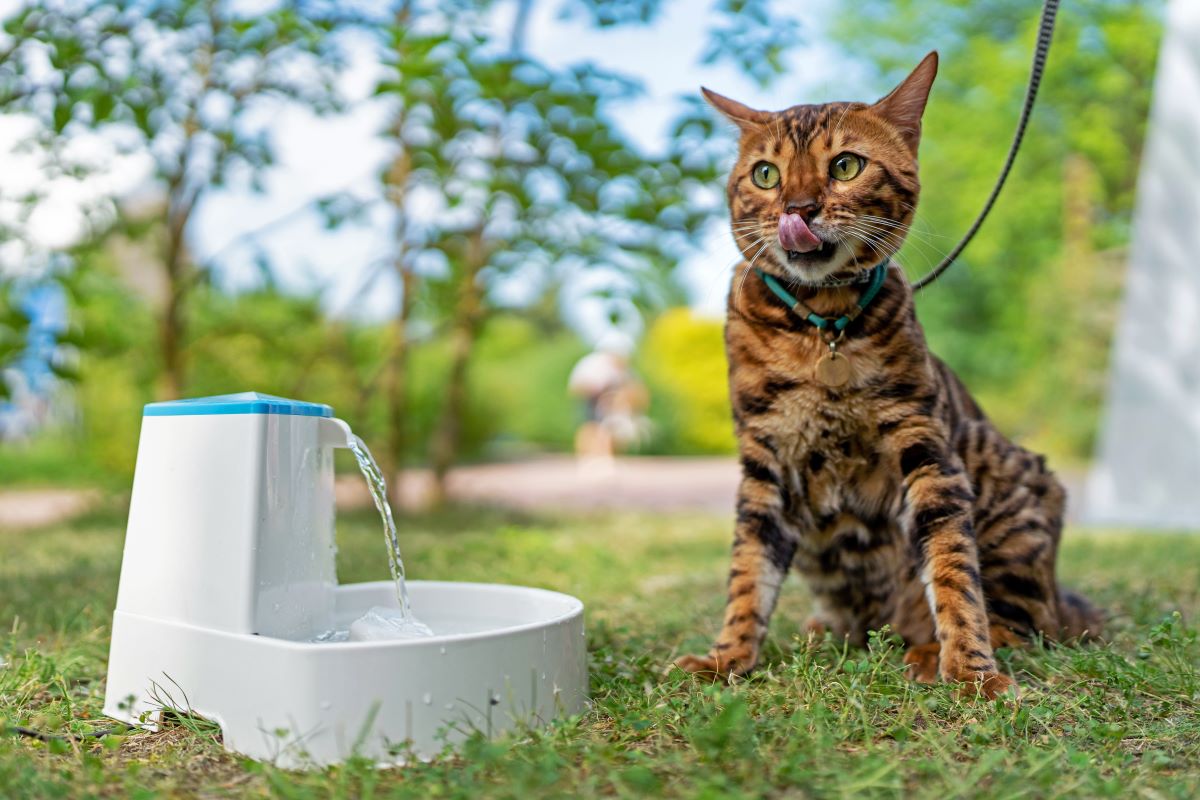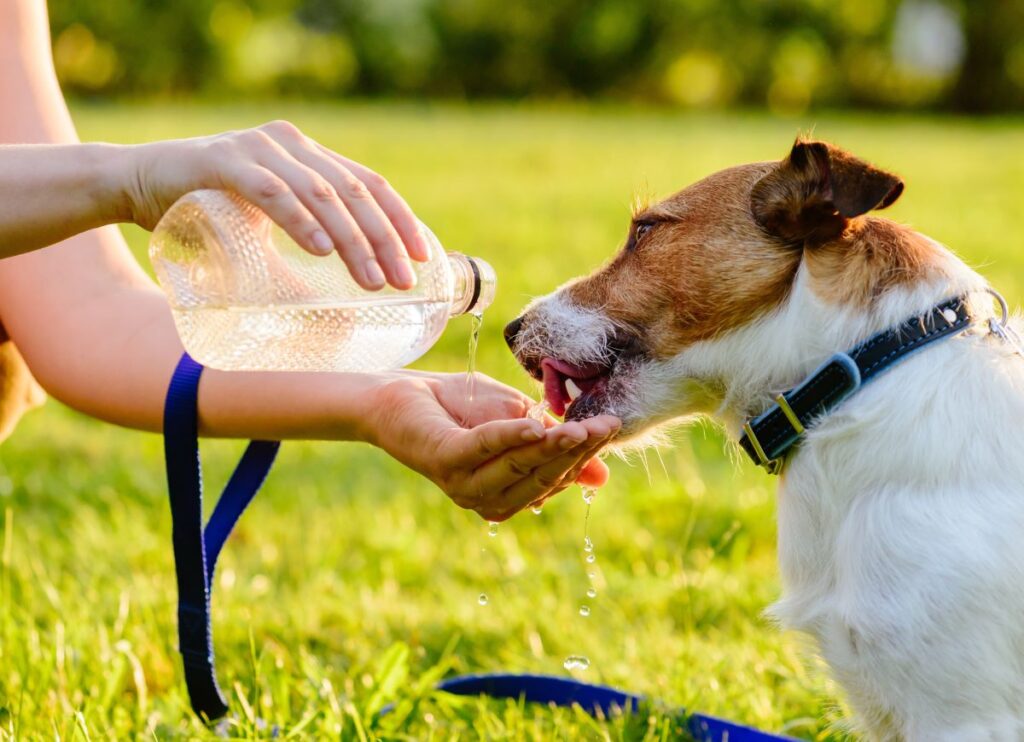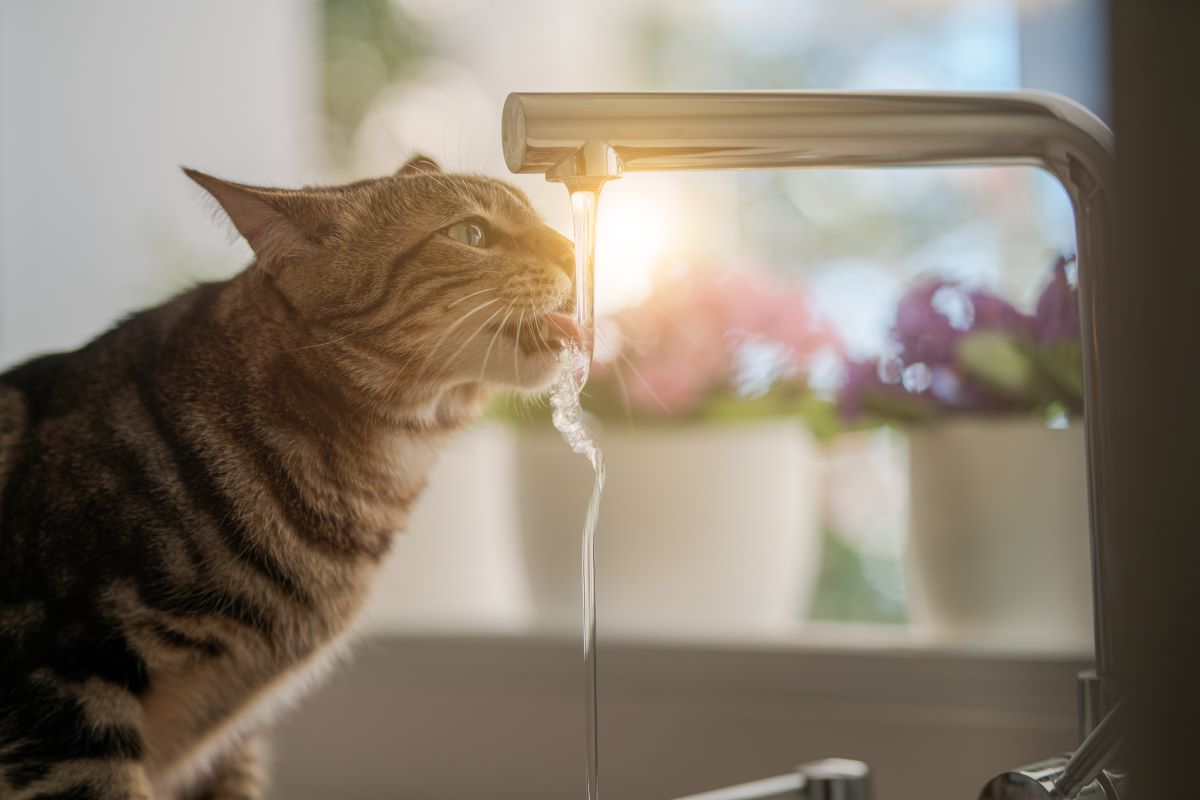1. Make Water Easily Accessible
Ensure your pet always has access to fresh, clean water. Place water bowls in multiple locations around your home, especially in areas where your pet spends the most time. For cats and smaller dogs, using shallow bowls can make drinking easier. Larger pets may benefit from heavier bowls that won’t tip over.
2. Refresh Their Water Regularly
Pets are often picky about the freshness of their water. Change it at least twice a day to keep it clean and appealing. During hot weather or after playtime, refresh the bowl more frequently to ensure cool water is available.
3. Invest in a Pet Water Fountain
Many pets, particularly cats, prefer running water to still water. A pet water fountain can entice them to drink more by mimicking the sound and motion of a natural water source. These fountains also help keep the water oxygenated and fresh, making it more appealing.
4. Add Flavor to Their Water
If your pet needs extra encouragement, try adding a splash of low-sodium chicken or beef broth to their water. For cats, a small amount of tuna water can work wonders. Just ensure that any additives are safe and free from harmful ingredients like onions or garlic.
5. Serve Wet Food
Wet food contains a high percentage of water and can significantly boost your pet’s hydration levels. If your pet eats dry kibble, consider mixing in wet food or switching to a fully wet diet if recommended by your vet.
6. Use Ice Cubes
Some pets enjoy playing with or licking ice cubes. You can add plain ice cubes to their water bowl or offer them as a treat on hot days. For an extra treat, freeze low-sodium broth or diluted tuna water into cubes.
7. Offer Water During Playtime
Encourage your pet to drink water after exercise or play. Keep a portable water bowl or pet water bottle handy during walks or trips to the park.
8. Monitor the Temperature
Pets are sensitive to water temperature. Some prefer cool water, especially during warmer months. Others might like room-temperature water. Experiment to see what your pet prefers.
9. Choose the Right Bowl
Certain materials, like stainless steel or ceramic, can keep water cooler than plastic. Some pets may also have preferences for the size, shape, or material of their water bowl, so it’s worth trying a few options.
10. Keep the Bowl Clean
Pets are less likely to drink from a dirty bowl. Wash their bowls daily with warm, soapy water and rinse thoroughly to remove any residue. Regular cleaning prevents bacteria and slime buildup that can make water less appealing.
11. Encourage Hydration Through Play
If your pet is reluctant to drink water, make it a game. Use toys that dispense water or offer treats that are rich in moisture. Some pets might even enjoy licking water off their owner’s hand or a clean surface.
12. Track Their Water Intake
Keep an eye on how much your pet is drinking each day. If you notice a sudden decrease in their water intake, it may signal an underlying health issue, and you should consult your veterinarian immediately.
13. Offer Broth-Based Treats
Make homemade popsicles using pet-safe ingredients like diluted chicken broth or pureed fruits and veggies. These treats are especially helpful during summer months to keep your pet hydrated and cool.
14. Address Environmental Factors
Ensure your pet’s living space isn’t overly hot or dry. Use fans, air conditioning, or a humidifier to maintain a comfortable environment, especially during extreme weather.

When to Worry About Dehydration
It’s important to recognize the signs of dehydration in pets. These include:
Dry gums or nose
Lethargy or weakness
Sunken eyes
Loss of appetite
Skin that doesn’t snap back into place quickly when gently pinched
If you suspect your pet is dehydrated, offer water immediately and contact your veterinarian for advice. Severe dehydration can require urgent medical attention.
Final Thoughts
Encouraging your pet to drink more water doesn’t have to be a chore. With a combination of these tips and a little creativity, you can make hydration a regular part of their routine. Always consult your veterinarian if you’re unsure about your pet’s hydration needs or if you’re considering significant dietary changes. By prioritizing hydration, you’ll help ensure your pet stays happy, healthy, and full of energy.


FAQs
How much water does my pet need daily?
The general rule of thumb is that dogs need about one ounce of water per pound of body weight each day, while cats require around 3.5 to 4.5 ounces of water per 5 pounds of body weight. Individual needs may vary based on factors like age, activity level, and diet.
What should I do if my pet refuses to drink water?
If your pet consistently refuses water, try the tips above, like using a pet water fountain or adding flavor to their water. If the issue persists, consult your veterinarian to rule out any underlying health problems.
Can my pet drink too much water?
Yes, excessive water intake can indicate health issues like diabetes or kidney disease. If you notice your pet drinking unusually large amounts of water, consult your veterinarian.
Are there any signs that my pet is dehydrated?
Common signs of dehydration include dry gums, lethargy, sunken eyes, and loss of skin elasticity. If you suspect dehydration, offer water immediately and contact your veterinarian.
Is tap water safe for pets?
In most areas, tap water is safe for pets. However, if your water quality is questionable or your pet has a sensitive stomach, consider using filtered or bottled water.


